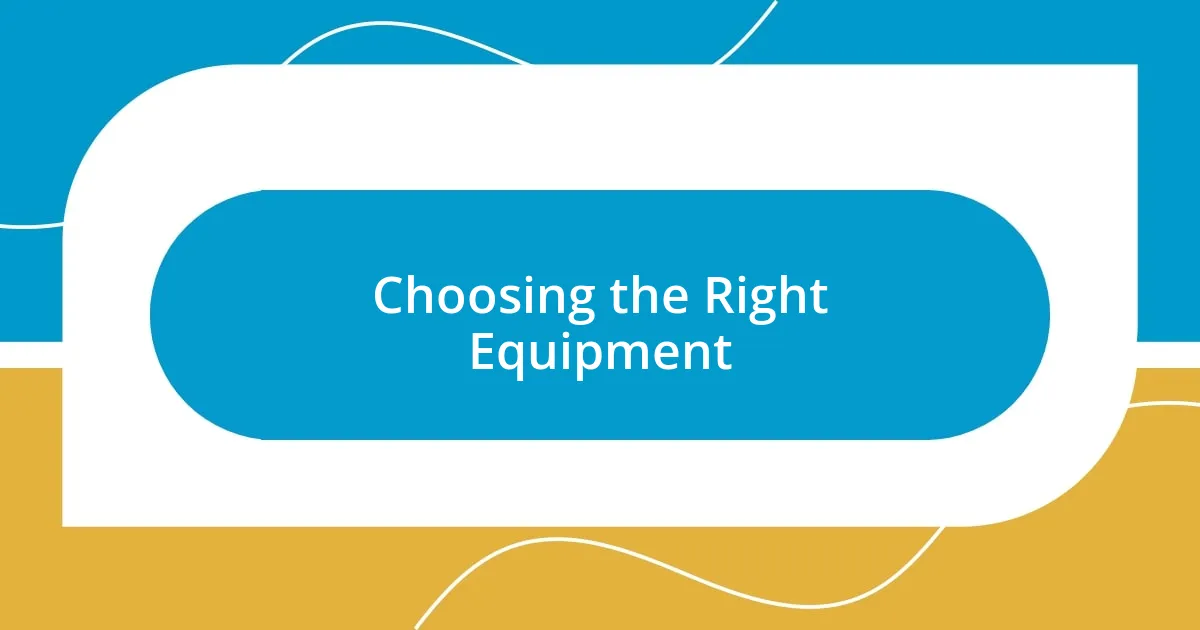Key takeaways:
- Cloudy conditions offer unique opportunities for introspection, creativity, and inspiration, transforming mundane environments into rich canvases.
- Adapting to low light involves embracing the ambiance, utilizing portable light sources, and being aware of surroundings to uncover beauty.
- Investing in quality weatherproof gear enhances exploration during inclement weather, ensuring comfort and motivation to create.
- Effective composition techniques, like using leading lines and negative space, can optimize photography in cloudy conditions, revealing unexpected beauty.

Understanding Cloudy Conditions
Cloudy conditions can feel a bit disheartening, can’t they? When I found myself caught in the gloom of overcast weather, I realized it’s not just about the lack of sunlight; it’s the mood it brings. The world outside appears muted, and I’ve often wondered how that affects not just my energy levels but also my creativity and perspective on life.
On days shrouded in clouds, I’ve noticed my thoughts tend to linger longer on introspection. This subtle shift in vibe has taught me to embrace the stillness as an opportunity for reflection rather than a barrier. Have you ever taken the time to listen to your thoughts during a rainy afternoon? I find that it often leads to insights I might miss when everything feels bright and bustling.
Moreover, I’ve learned that cloudy conditions can actually provide a unique canvas for inspiration. One of my favorite moments was watching the scenery transform under gray skies; colors seemed richer, and textures more pronounced. It’s fascinating how those seemingly dull days can sometimes spark unexpected creativity—almost like seeing the world through a different lens.

Adapting to Low Light
There’s something about adapting to low light that feels like a personal challenge. I remember heading out with my camera on a particularly cloudy day, convinced the lack of sunlight would ruin my shots. Surprisingly, the soft diffused light created a magical ambiance, making the colors pop in a way I hadn’t seen before. It taught me that low light can actually sanitize harsh contrasts, resulting in a more subtle, beautiful composition.
When navigating through darkened spaces, I’ve learned that adjusting my mindset is crucial. Have you ever noticed how our perception shifts when we embrace the gloom instead of resisting it? I’ve started carrying a portable light source, a simple LED flashlight, which can illuminate my surroundings and add a creative spark when inspiration seems dim. This small change has enhanced my ability to see the world from new perspectives, transforming shadows into intriguing shapes rather than dismissing them.
I’ve also found that paying attention to your environment in low-light situations can heighten awareness. One evening during a walk, the streetlights reflected on the wet pavement, creating ripples of light that danced across the ground. This simple moment reminded me that, even in low light, beauty can emerge if we’re willing to look for it. It encourages me to continually adapt, reminding me that sometimes the most enchanting experiences lie in the shadows, waiting to be discovered.
| Aspect | Low Light Adaptation |
|---|---|
| Equipment | Portable light sources like LED flashlights |
| Mindset | Embracing the ambiance rather than resisting |
| Perception | Heightening awareness of surroundings and potential for beauty |

Choosing the Right Equipment
Choosing the right equipment can truly enhance your experience during those cloudy days. I recall a time when I underestimated the importance of having a reliable umbrella. On a whim, I grabbed a small, flimsy one before heading out, thinking it would be enough. Midway through my excursion, the skies opened up, and I was left soaked and regretting my lack of foresight. Having gear that stands up to the elements is critical—not just for staying dry but also for maintaining your motivation to explore or create.
When considering your equipment, it’s essential to focus on what will serve you best. Here’s a quick list that I’ve found helpful:
- Weatherproof gear: Invest in good-quality rain jackets and sturdy umbrellas.
- Camera protection: Use rain covers or cases for your camera to capture those stunning moody landscapes.
- Comfortable footwear: Waterproof boots can make a world of difference when navigating wet terrain.
With thoughtful choices in your equipment, you can embrace the day’s challenges rather than shy away from them. Each piece of gear, from the sturdy umbrella to the reliable footwear, transforms how I interact with my environment, even when the weather doesn’t cooperate.

Techniques for Enhanced Visibility
When the skies are dreary, visibility can still be improved with a few simple techniques. I often rely on the power of contrast to highlight my subjects. For instance, during a recent outing, I spotted a bright red flower against a muted gray backdrop. Capturing that stark difference not only drew attention but also brought a sense of vibrancy to the otherwise subdued setting. It made me think—how often do we miss out on beauty simply because we don’t look for contrasts?
Another technique I’ve found useful is adjusting my camera settings. In low-light situations, increasing the ISO can illuminate details that might otherwise fade into darkness. Tinkering with the aperture has also helped me create depth, transforming a flat image into one that tells a story. There was a time when I was hesitant about altering these settings, fearing they would ruin my shots. But with practice, I discovered that experimentation can lead to unexpected and delightful results. Have you ever tried playing with your settings in challenging conditions? It can be a game changer.
Lastly, layering my clothing not only keeps me warm but also serves a practical purpose. Wearing bright colors, like a neon jacket, can significantly improve my visibility to others during overcast days. I remember standing at a busy intersection on a foggy morning, feeling reassured that drivers could spot me, even from a distance. It’s an often-overlooked detail, but it fosters a sense of safety, allowing me to embrace exploration even when the weather isn’t on my side.

Optimizing Composition in Clouds
When it comes to optimizing composition in cloudy conditions, I find that incorporating leading lines can dramatically enhance my images. I remember one dreary afternoon exploring a winding path through a misty forest. The trees, though shrouded in fog, guided my eye toward a hidden cabin in the distance. This natural framing not only added depth to my shot but also created a sense of adventure, pulling viewers into the story of my journey. Have you ever considered how paths or fences can lead the eye and evoke curiosity?
Another technique I swear by is the use of negative space. In cloudy conditions, the sky often takes on a unique character that deserves attention. I had a memorable experience shooting a vast, empty beach, where the muted gray heavens contrasted beautifully with the deep blue water. By intentionally allowing more space in my frame, I created a sense of solitude and anticipation. It’s fascinating how empty areas can convey emotion just as effectively as a busy scene. Have you found that negative space can elevate your work as it did mine?
Lastly, I’m a huge advocate for spontaneity. In changing weather, you have to embrace the unexpected. One day, while photographing a rustic barn under threatening clouds, I accidentally turned just in time to catch a burst of sunlight breaking through. That split second transformed a good shot into something truly magical. It’s moments like that make me wonder—what treasures are waiting for you if you allow yourself to be flexible and open to change? Each time I step outside, I remind myself that sometimes the best compositions come when you least expect them.

Post-Processing Tips for Cloudy Days
Post-processing is key on cloudy days, where subtle light can make a difference. I usually start by adjusting the exposure levels to brighten my images. Once, I was working with a shot of a misty landscape that, while capturing the mood, felt a bit flat. By lightly boosting the exposure, I breathed life into the clouds and added a sparkle to the scenery that wasn’t visible at first glance. Have you ever tried pushing the exposure just a notch? It can reveal hidden beauty you’d otherwise miss.
Next, I can’t stress enough the power of refining color balance. The cool tones presented by cloudy skies often require warming up the image to make it feel inviting. I recall a moment photographing a cozy coffee shop, where the gray surroundings threatened to dampen the cozy vibe inside. Adjusting the color temperature helped highlight the warm wood tones and soft lights, creating a welcoming atmosphere that contrasted beautifully with the bleak exterior. It made me realize how much color speaks to mood—how do your images reflect the feelings you want to evoke?
Finally, I love using vignetting effects to draw focus to the subject. During a recent shoot in a fog-laden city, I discovered that adding a subtle vignette not only enhanced my subject but also added a touch of mystery to the overall feel. It felt like framing the experience, pulling the viewer deeper into the scene. It really got me thinking—how do you want your viewers to feel when they look at your photos? Sometimes, the right editing touch can lead them right where you want.

Case Studies and Examples
One memorable shooting experience that sticks with me was during a foggy morning at a historic battlefield. I set up my camera with a low angle, capturing the dew-soaked grass and the weighty, mysterious fog that hung in the air. The mist tended to blur the outlines of trees in the distance, creating a hauntingly ethereal effect. This choice not only enhanced the mood but also provided viewers a glimpse into the solemnity of the site. Do you have locations that transform under specific weather conditions?
Another example I recall happened while taking pictures of a cityscape just before a rainstorm. Despite the gloom, the reflections of neon lights in the puddles added a vibrant pop to my images. I decided to shoot from a slightly elevated position, taking advantage of the leading lines of the streets to guide the viewer’s eye toward the heart of downtown. This unexpected juxtaposition between the dark clouds and vivid city life reminded me of the beauty found in chaos. How often do we overlook such contrasts in our everyday surroundings?
Finally, a fantastic case for the power of movement came when I photographed trees swaying in a brisk wind under brooding clouds. Instead of aiming for a static shot, I experimented with slower shutter speeds to capture the trees’ dynamic motion. The resulting images conveyed a sense of life and energy that static photos couldn’t achieve. I still remember the exhilarating feeling of creating something unique in an otherwise gray day. Have you ever dared to embrace motion in your photography? Sometimes, those moments of risk are where the magic happens.














